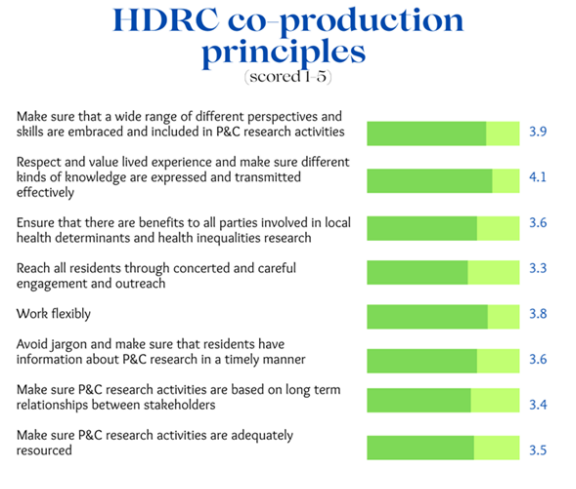A reflection from the survey findings is that experiences and perspectives on P&C research vary significantly both across and within sectors. For survey questions related to views on P&C research in Tower Hamlets (e.g. its benefits, challenges, and who should coordinate P&C research in the borough), the highest proportion of respondents selecting any one option was only 29%, indicating a lack of consensus. This highlights the importance of ensuring that any further development of a P&C research system is inclusively co-designed.
Despite these differences, there was strong consensus in the survey (100% of participants) on the need to coordinate P&C research in Tower Hamlets and establish a shared system across the borough. Survey participants (25%) also emphasised the benefit of maintaining long-term relationships among stakeholders to ensure research quality. This priority was consistently shared across all 29 stakeholder groups, further underscoring the critical role of coordination in the P&C research system.
Opinions on who should lead the coordination of P&C research across the borough were diverse, with options including a group of organisations (29%), THCVS (22%), and the Council (12%). The small sample size (65 respondents on this question) means a sector-based analysis is not possible, but the idea of a group of organisations working together was the most popular, especially among P&C researchers (35%). This preference may stem from the perceived independence such a body could offer.
A coordinating group could take various forms, such as a funded collaborative partnership or a Community Interest Company (CIC). Regardless, such a group would have to ensure active involvement from P&C researchers and all relevant organisations. This is illustrated by a free text comment made by a VCS stakeholder in the survey:
“Various partners [should collectively lead the coordination body], just avoid supporting one or two gatekeepers please, it’s harmful.” (community organisation representative)
The HDRC uses the ActEarly co-production principles (27) to guide their engagement with residents. In the survey, we asked participants to what extent they agreed that these principles are applied when conducting P&C research in Tower Hamlets. Responses were scored from 1 to 5, with 1 indicating 'strongly disagree' and 5 indicating 'strongly agree'. The average score across all principles was above average (3.6 out of 5, see Figure 8 for individual scores), again highlighting both the strengths and opportunities for improvement in the collaborative approach to P&C research in Tower Hamlets.
